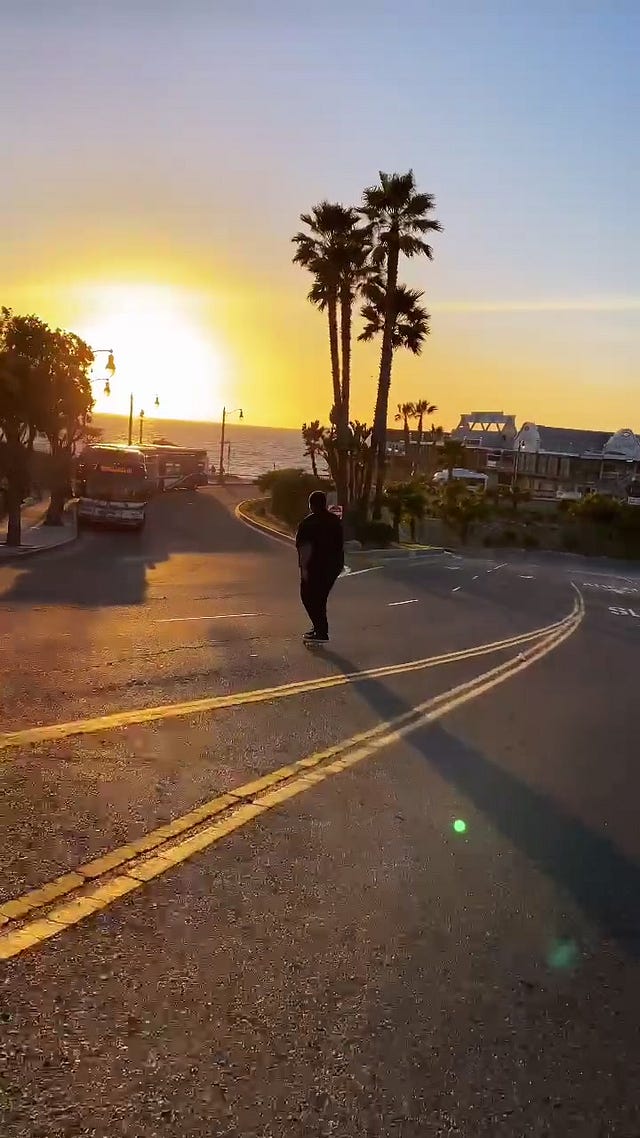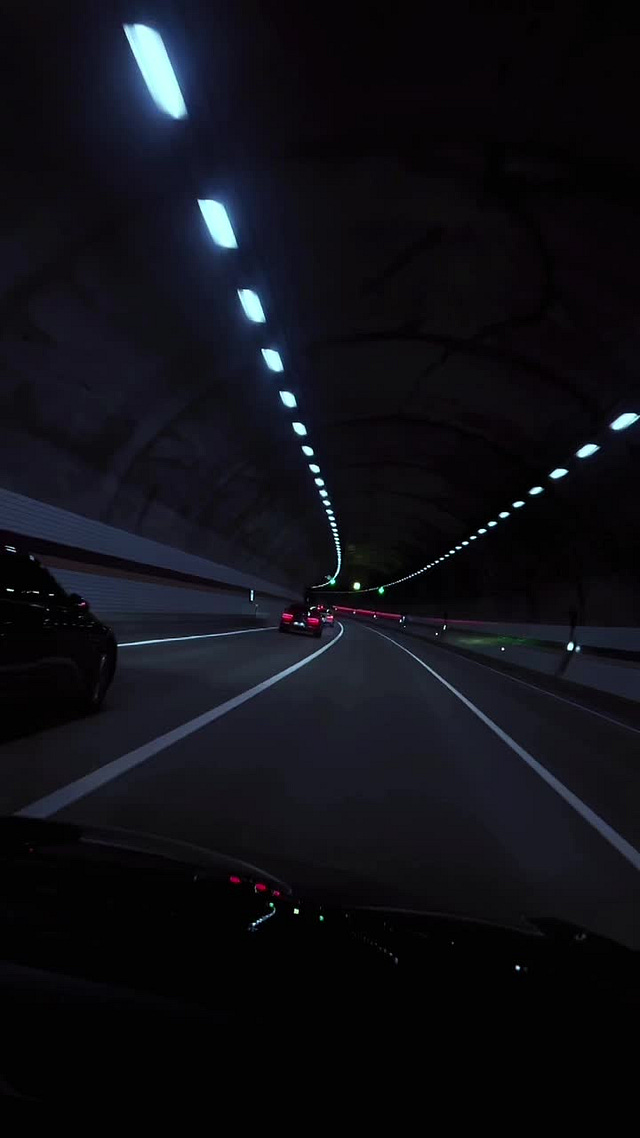The Aesthetic of the Road in the Digital Age: An Invitation to Virtual Wandering
Between popular hashtags and viral aesthetics, the fascination with roads on social media reflects our collective desire for freedom, escape, and an ever-unreachable elsewhere.
Tuesday night on Earth. While browsing through my saved photos, I noticed hundreds of pictures of roads—some solitary, others less so. It’s an aesthetic that resonates with millions of people, amplified by social media and pop culture. Don’t hesitate to share, like, or write to me.
There’s something hypnotic about the aesthetics of a road, whether we’re passengers, drivers, or scrolling through our social media feeds. As early as the mid-20th century, Martin Heidegger observed that we had entered the era of a "world picture." Not a singular image of the world, but rather a system of images in which all things belong and are interconnected. These images no longer merely represent the world; they are vectors of our being, a fuel for narrating who we are—something that resonates deeply with the nature of social media today.
At a time when we’re witnessing a strong pushback against transactional interactions and growing fatigue with ever-more aggressive platforms, the right to wander freely might just be the antidote to mindless content consumption.
The influence of pop culture before social media
It’s easy to forget that social media is only about 30 years old. Before its advent, literature (On the Road), cinema (Thelma & Louise), and even anthropology (Albert Kahn’s Archives of the Planet) laid the groundwork for our imagination of the road. Beyond Hollywood, roads symbolize family estrangements, exile stories, and pilgrimages shaped by wars, colonization, and catastrophes.
The road became a myth, passed down outside the digital world, starting in childhood and enriched by thousands of travel anecdotes and migration stories. These mythologies have since seeped into the digital images we create, as if every photo of a road extends a collective memory.
In more recent pop culture, the road represents dualities: solitude and melancholy (think Lana Del Rey’s Americana-inspired art) or hope and possibility, as seen in the opening scene of La La Land.
Instamood
Social media didn’t invent the fascination with roads. Digital cameras and smartphones made capturing photos and videos incredibly accessible. Between 1980 and 2014, the number of photos created annually surged from 57 billion to 880 billion. When Instagram launched in 2010, it codified these practices, making photography not just accessible but instantly shareable and socially validated.
Around 2013–2014, the "Instamood" trend—posting photos to convey a mood or state of mind—peaked in popularity. The road became a natural subject for this new visual language. Like an emoji blending words and emotions, the road conveys a wide range of feelings:
A shared wanderlust moment with friends.
A reference to a well-worn photography trope that mirrors the audience's expectations.
A hidden message for a select few who understand the reference.
Far from fading away, the road has only deepened its resonance on social media. During the height of the COVID-19 pandemic, thousands of videos—especially from skateboarding communities—emerged, showcasing the road as an escape during a unique moment in history.
 Tiktok failed to load.
Tiktok failed to load.Enable 3rd party cookies or use another browser
By 2023, Pinterest reported a surge in searches for "road trip aesthetic," with users saving these visuals to boards centered on escapism, mental health, retreats, and sanctuaries. This aligns with broader trends like "slow living" and a renewed desire to find meaning in the journey, beyond the destination.
As media evolves into ever-changing forms, the road has also benefited from the enriched functionalities of platforms. TikTok, a true cultural blender, has allowed road videos to intersect with song lyrics and the possibilities offered by editing tools, leading to the emergence of an aesthetic increasingly rich in meaning.
In France, it’s common for young people (often men) to share TikToks of themselves driving a car at night, with lyrics from rappers like Ninho overlaid on the footage. Interestingly, this composition often takes place during the summer.
 Tiktok failed to load.
Tiktok failed to load.Enable 3rd party cookies or use another browser
Liminal spaces and surrealism
Online, spaces where reality feels altered have grown increasingly popular. A foggy road might evoke a zombie movie, while an abandoned school suggests tragedy. P.T. Zimmerman defines a liminal space as “essentially ambiguous and, by definition, temporary—a space of transition or a space between fixed constants.”
These spaces capture the essence of nostalgia and the unexpected, two powerful emotions that drive digital engagement. The road embodies this liminality—it exists between movement and stillness, a starting point and a potential destination.
By stepping beyond its purely functional role, the road invites endless interpretations, shaped by the creator’s intent, the objective reality, and the audience’s perceptions—what Zola might have called "a leap into the stars."
Platforms that tap into Fernweh—the longing for the distant and unfamiliar—continue to thrive. Mapcrunch, for instance, allows users to teleport randomly to a location via Google Street View, offering visual and emotional exploration without commitment.
Free roaming in immersive worlds
Road aesthetics are also evolving in video games. Free Roam gameplay lets players wander through game worlds without specific missions or objectives. These virtual roads extend our desire to roam freely, creating experiences that are often recorded and shared on social media.
Perhaps the unspoken wish is to find a surprise—like a digital Rosebud—or maybe just another human connection.
The stat of the week: 1.5 million
On TikTok, over 1.5 million videos are tagged #road, collectively garnering billions of views.
Amazing links
What if smartphones were better than sleeping pills? I’ve shared some views. (Le Monde)
The Army of God Comes Out of the Shadows (The Atlantic)
It’s either this or death (
, Oblique Forecasting)
Have a great week! This newsletter is written with love, passion, and (Parisian) coffee.
Feel free to share this newsletter, like, comment, or keep sending me emails: these notifications are a joy.
My book “Alive In Social Media” is available on Amazon.










Love this analysis. It also makes me wonder if we're drawn to the image/ idea of the road on social media because we "go to" social apps to be transported somewhere but we rarely have a destination in mind. It legitimises the behaviour of scrolling somehow and gives a tiny hit of the feeling you get early on in a night out when you dont know where the night will take you